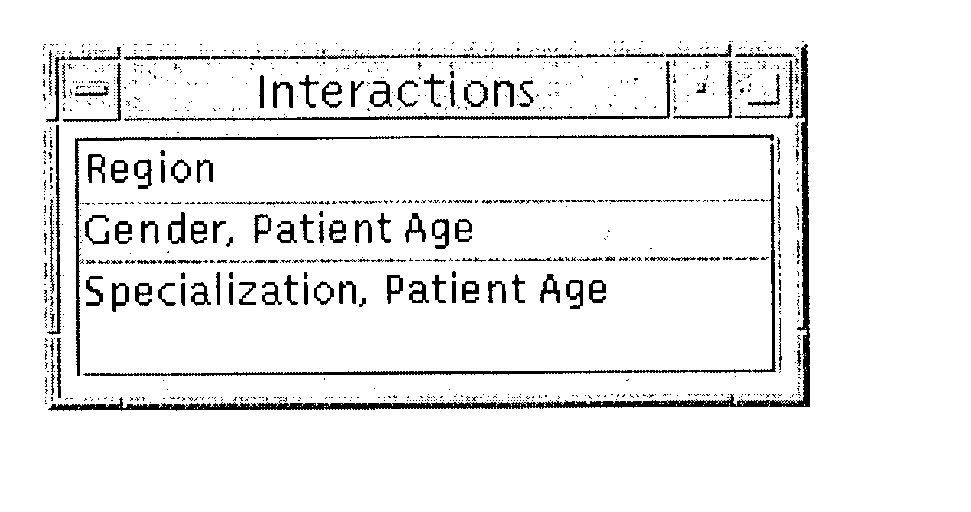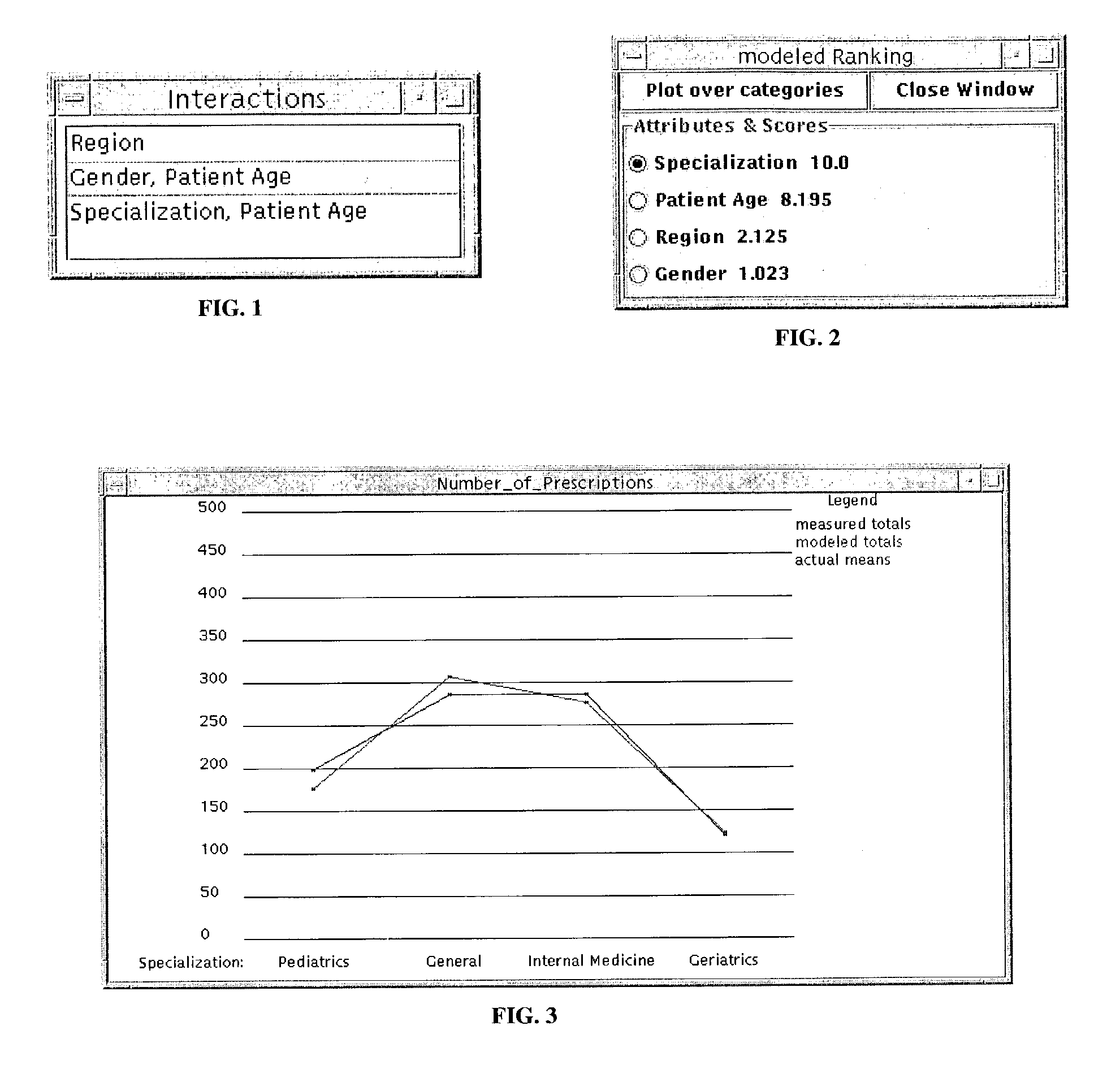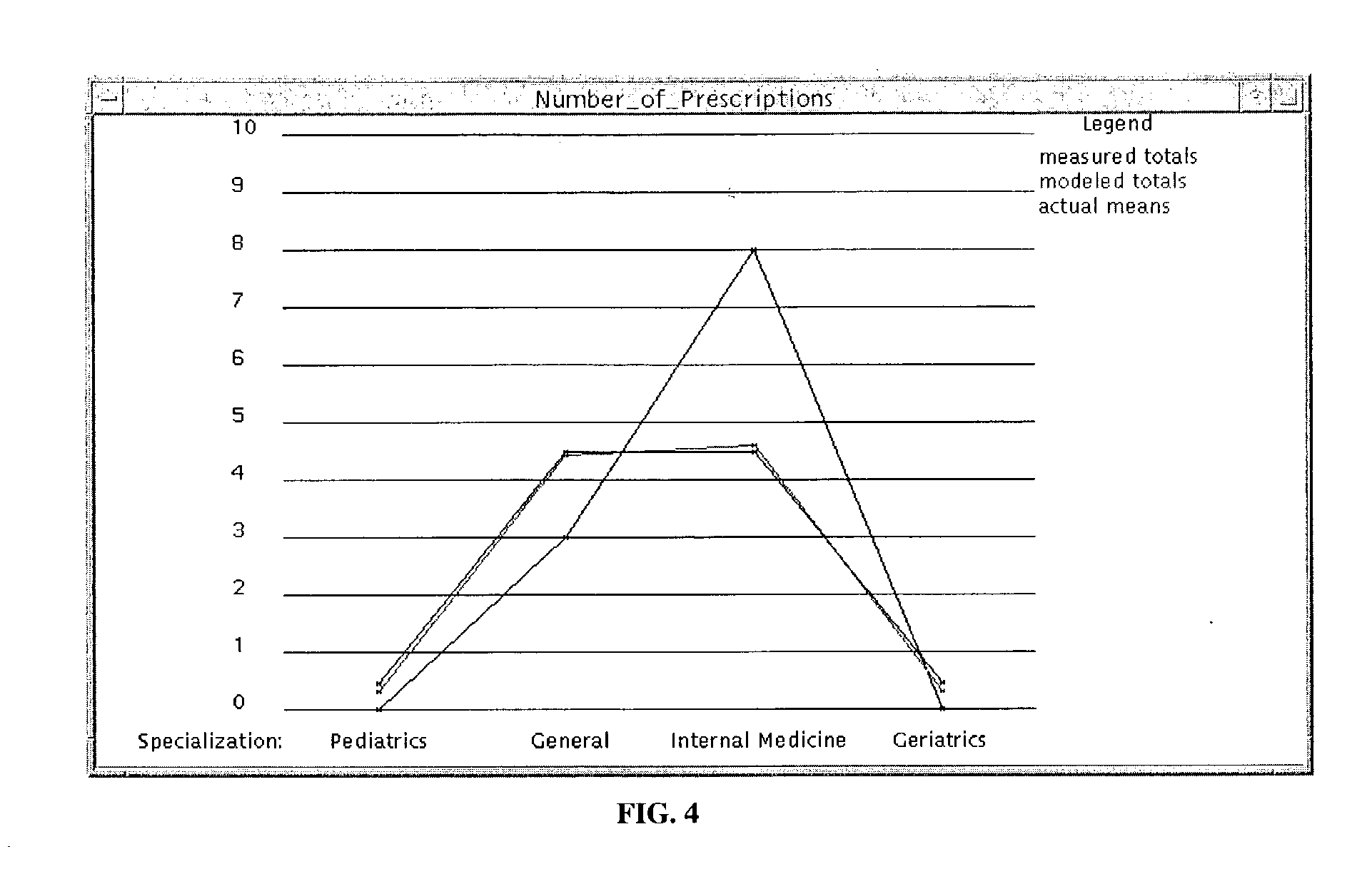Automated generator of optimal models for the statistical analysis of data
a statistical analysis and automatic generator technology, applied in the field of statistical modeling and analysis, can solve problems such as limited sample data availability
- Summary
- Abstract
- Description
- Claims
- Application Information
AI Technical Summary
Benefits of technology
Problems solved by technology
Method used
Image
Examples
Embodiment Construction
should be read together with the accompanying drawings, wherein:
[0023] FIG. 1 is a display showing groups of factors which interact in a model according to the present invention;
[0024] FIG. 2 is a menu displaying influential factors in the model output;
[0025] FIG. 3 is a plot showing the number of all prescriptions written as a function of physician specialization in an example presented according to the present invention; and
[0026] FIG. 4 is a plot showing the number of prescriptions written for males aged 19-35 in the Southwest as a function of physician specialization in the example of FIG. 3.
[0027] The present invention employs discrete category regression methods similar to linear regression methods. Both categorical and linear regression methods fall into a general category known as General Linear Models. The models dealing with categorical data are more advanced than those dealing with linear data, using more sophisticated modeling and requiring more computationally intensive...
PUM
 Login to View More
Login to View More Abstract
Description
Claims
Application Information
 Login to View More
Login to View More - R&D
- Intellectual Property
- Life Sciences
- Materials
- Tech Scout
- Unparalleled Data Quality
- Higher Quality Content
- 60% Fewer Hallucinations
Browse by: Latest US Patents, China's latest patents, Technical Efficacy Thesaurus, Application Domain, Technology Topic, Popular Technical Reports.
© 2025 PatSnap. All rights reserved.Legal|Privacy policy|Modern Slavery Act Transparency Statement|Sitemap|About US| Contact US: help@patsnap.com



